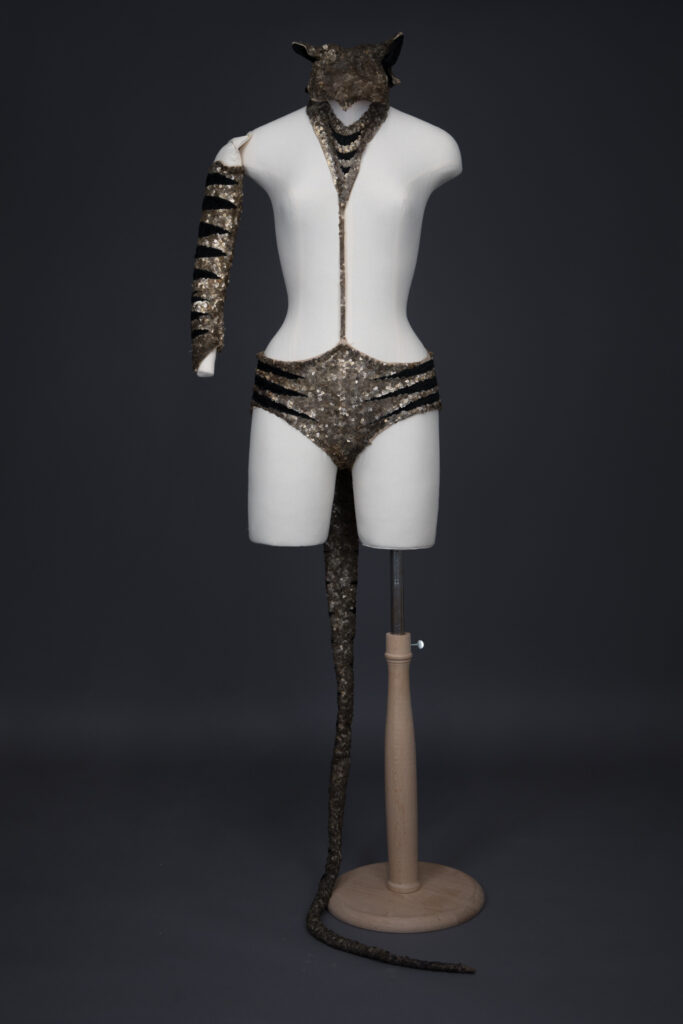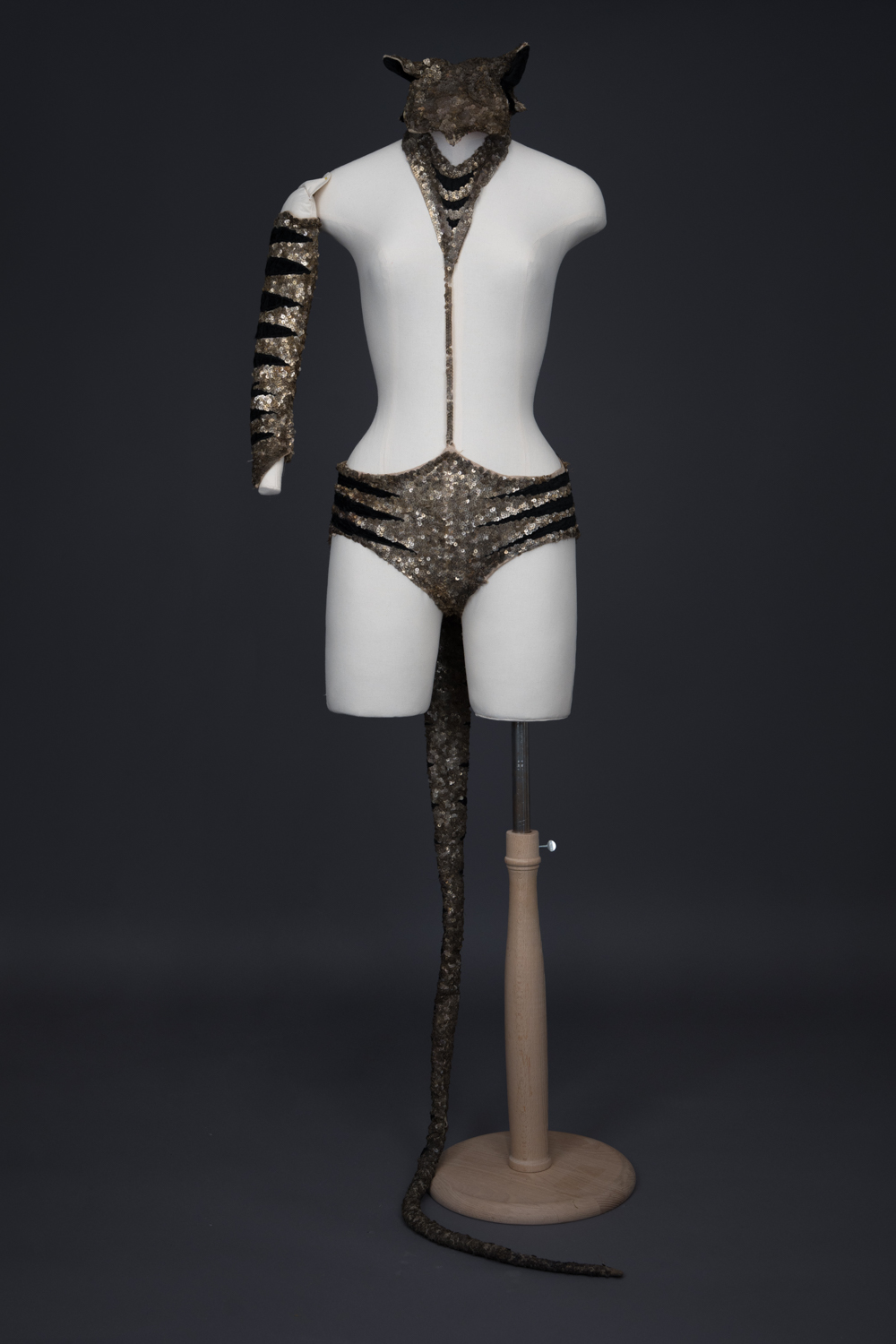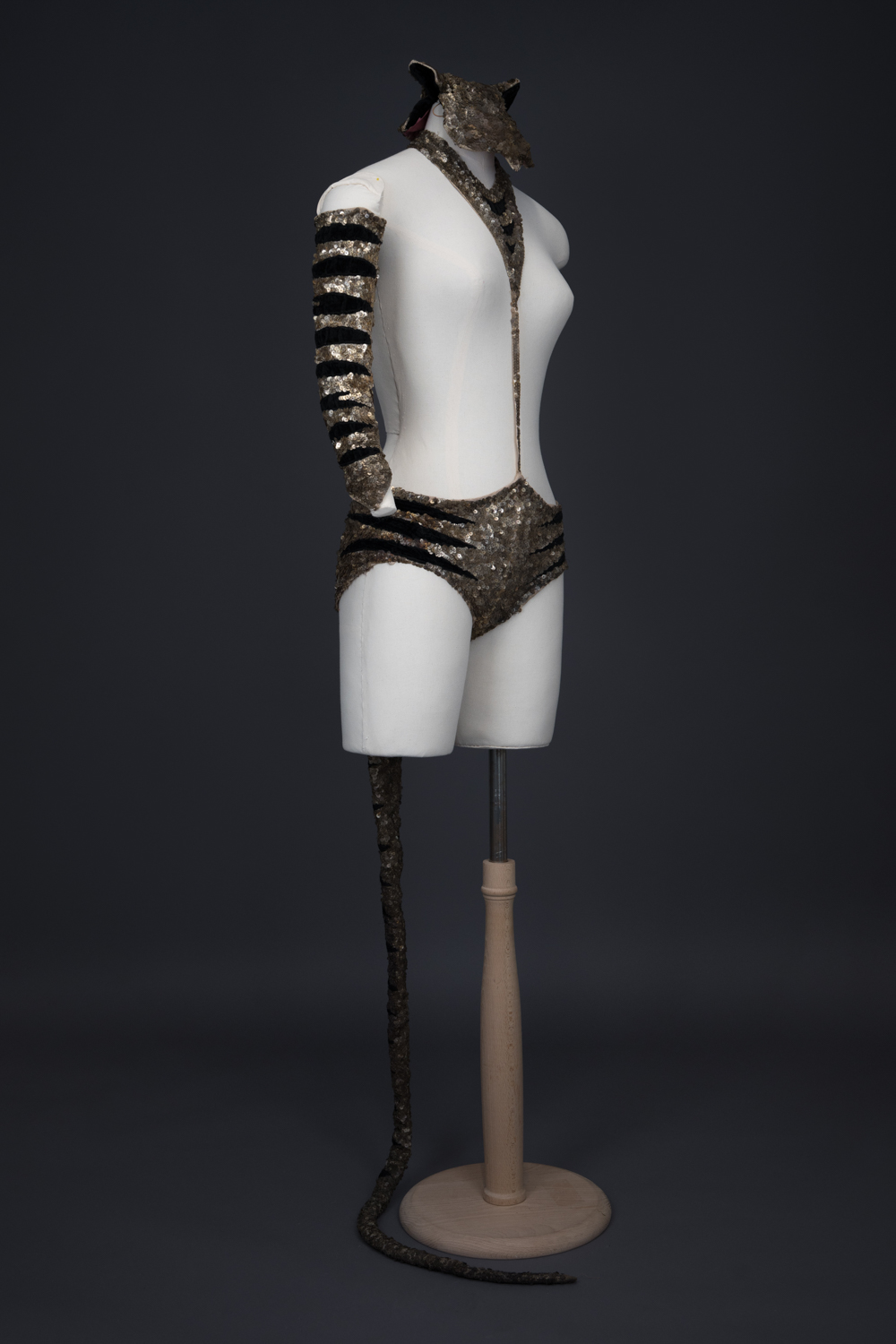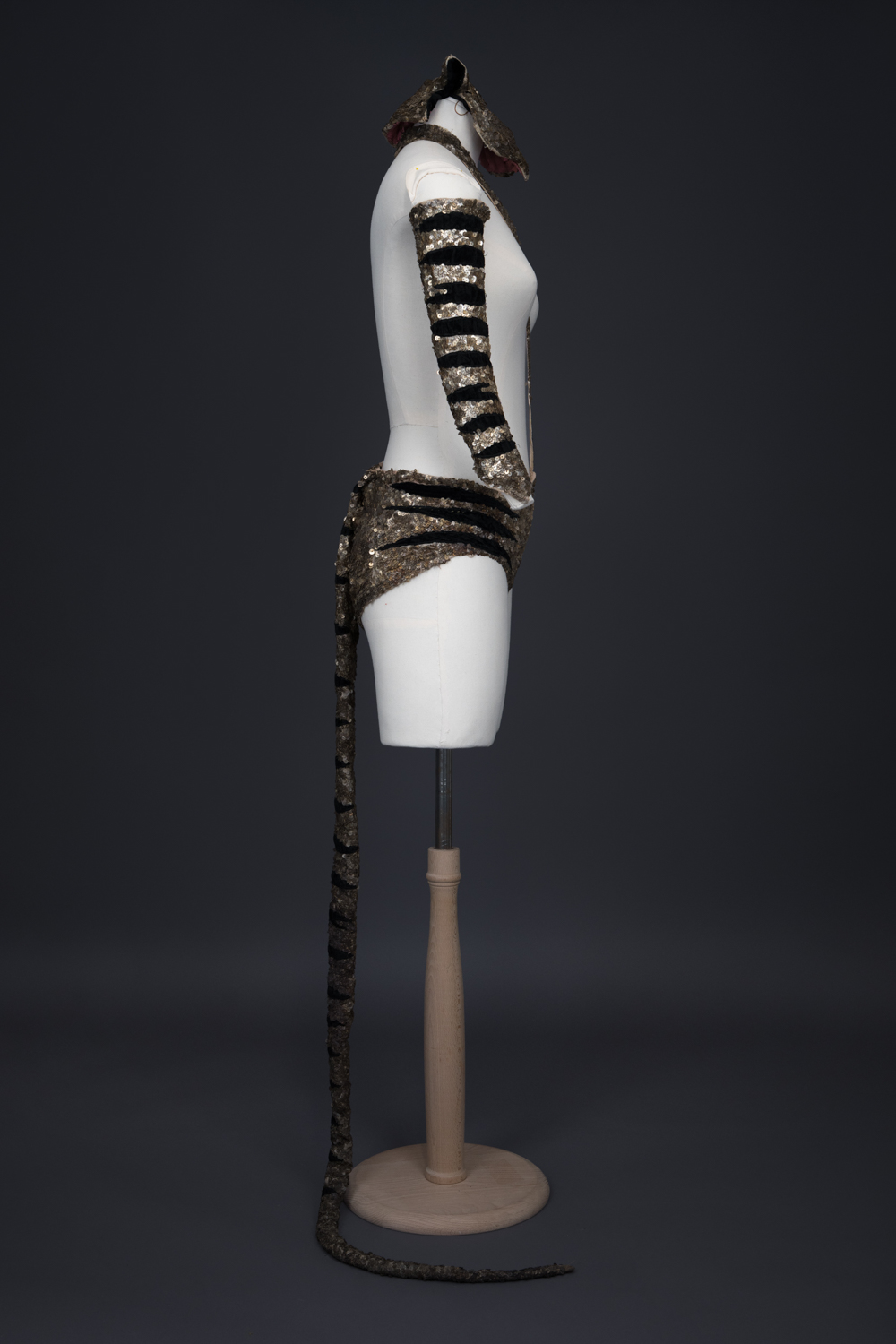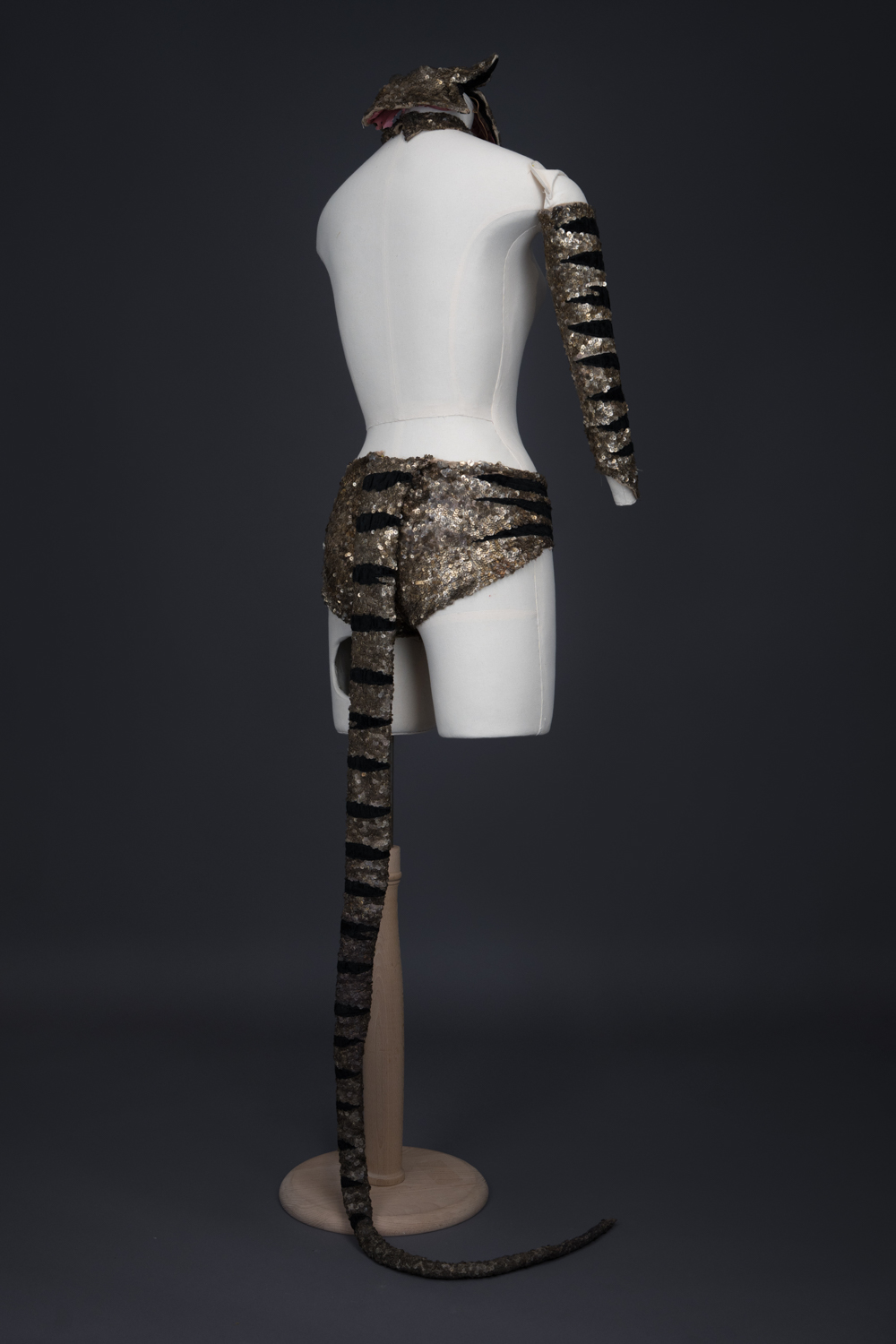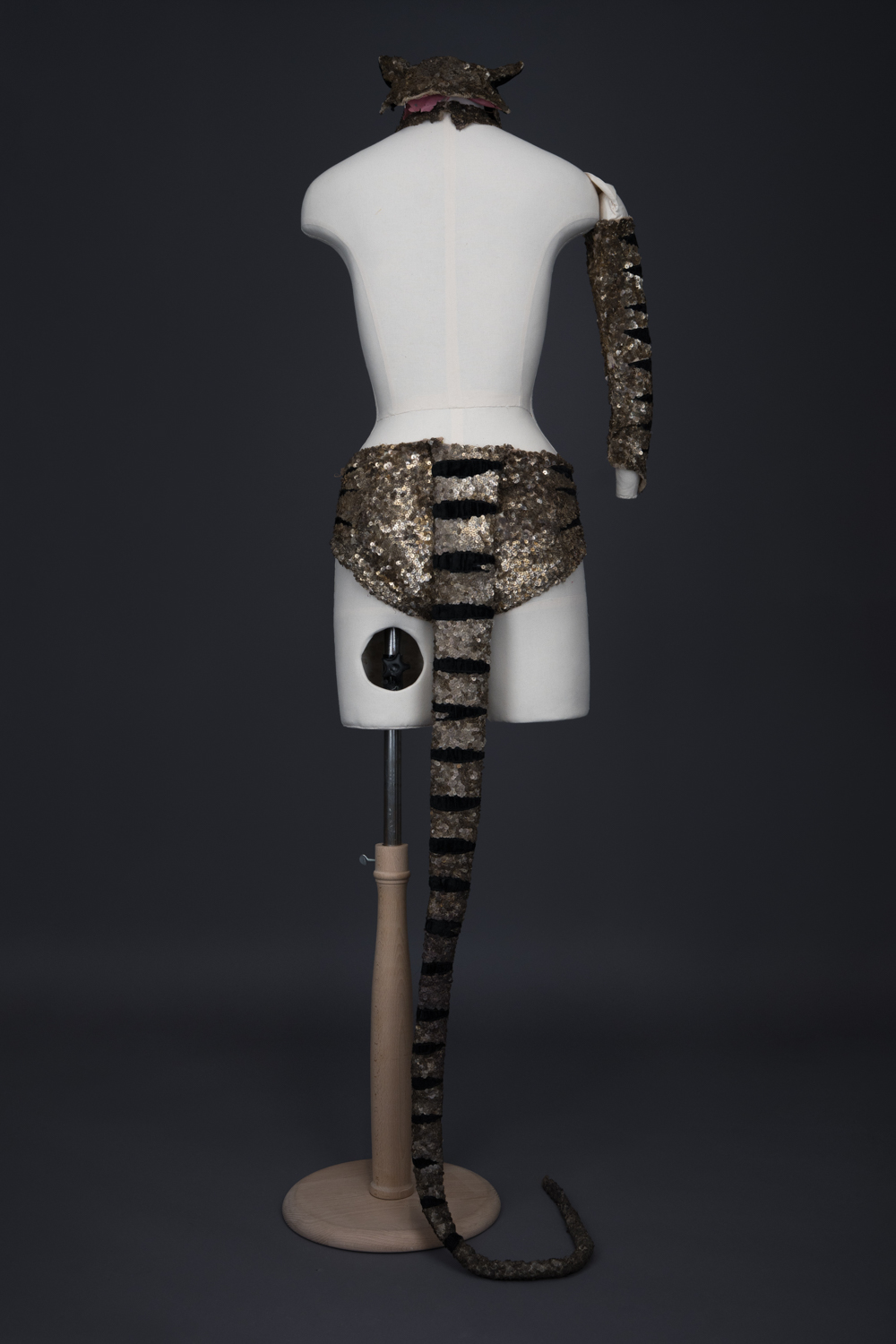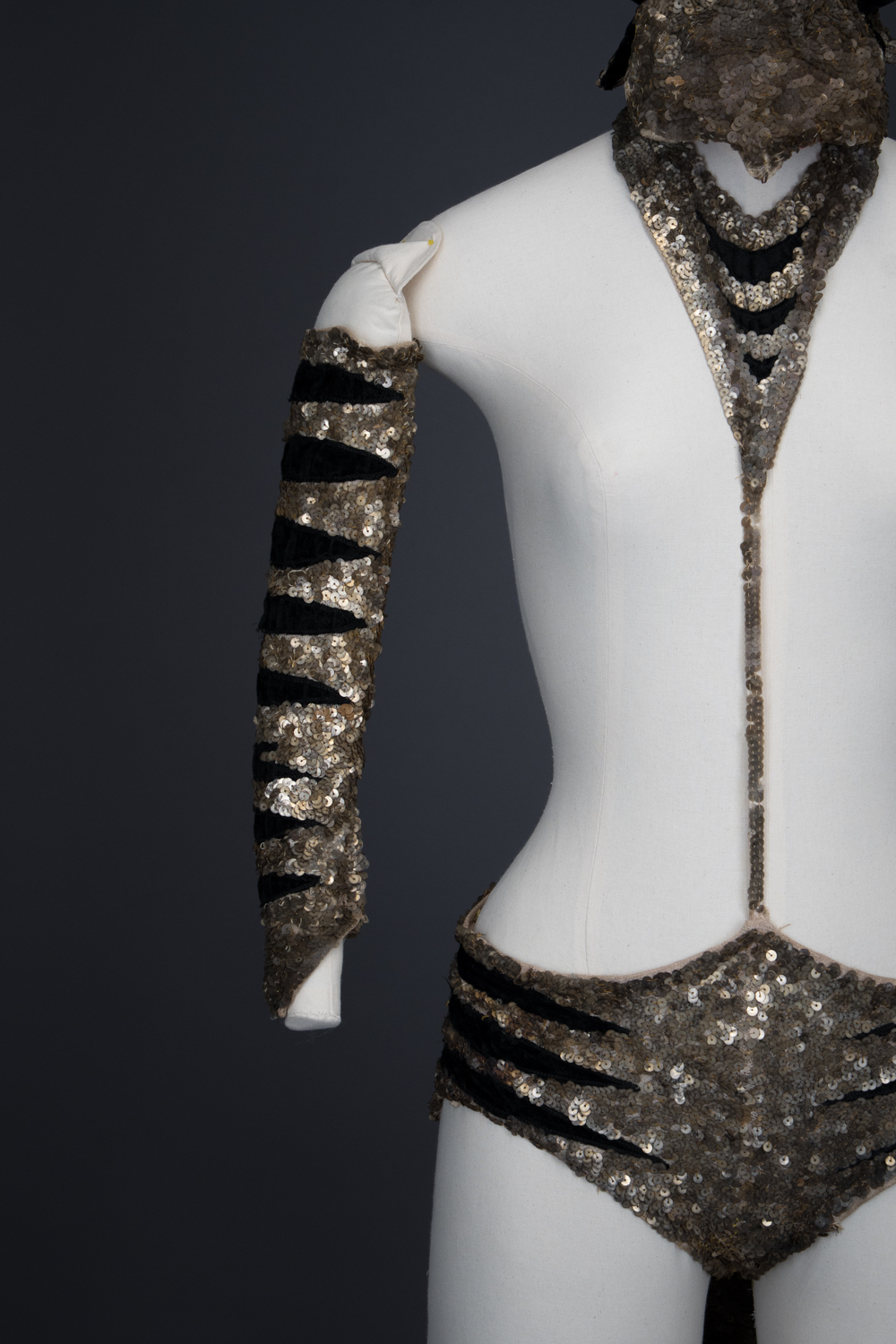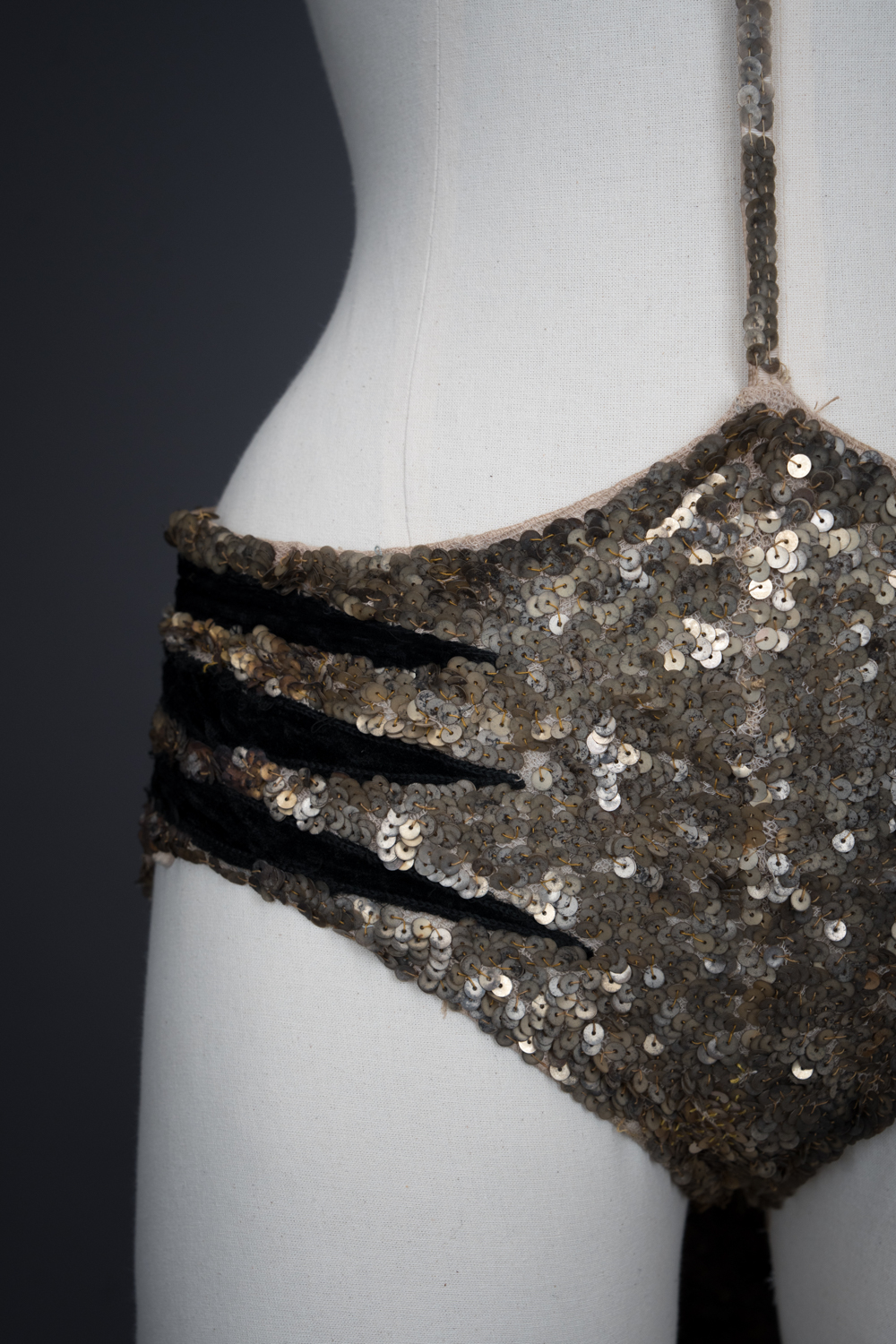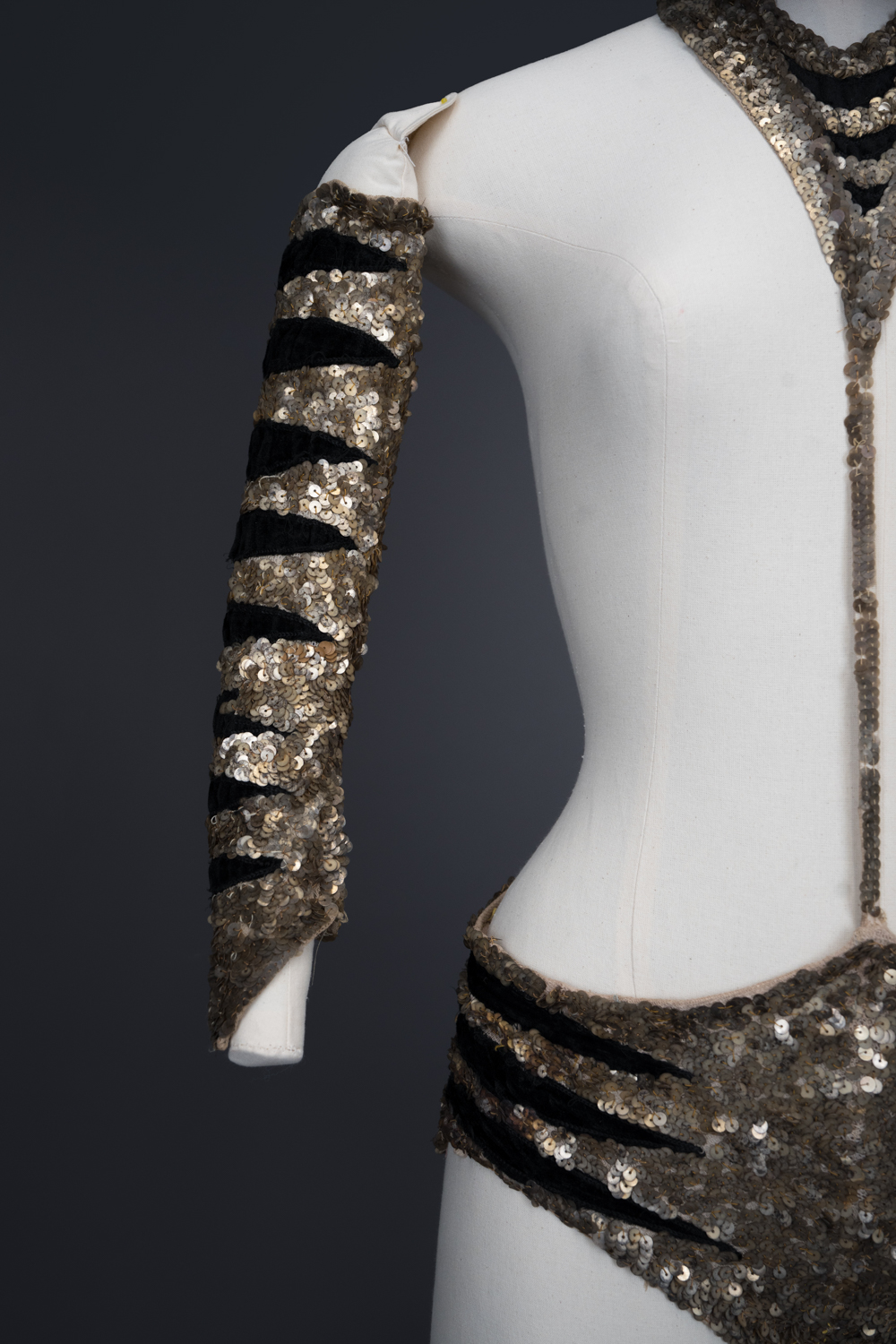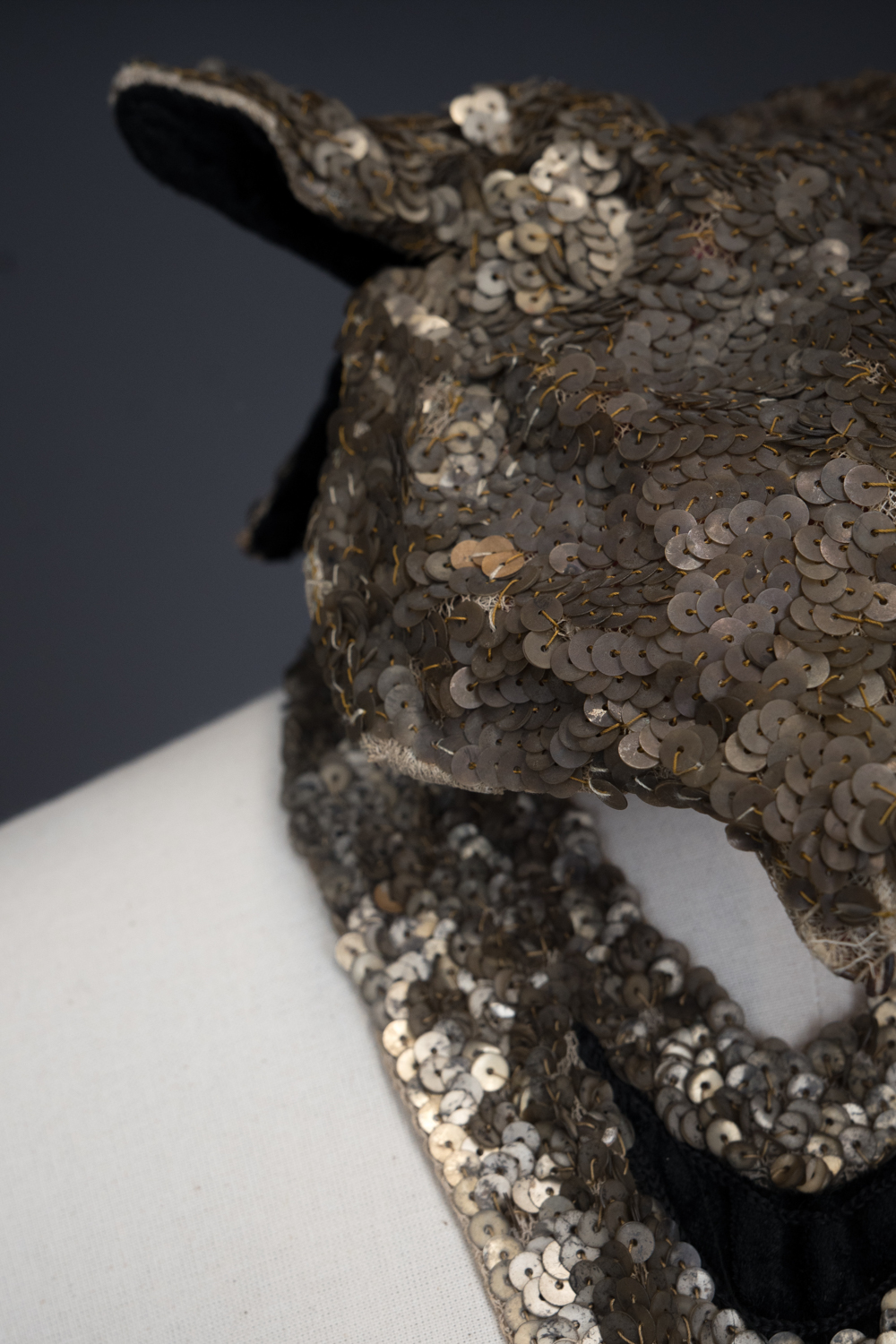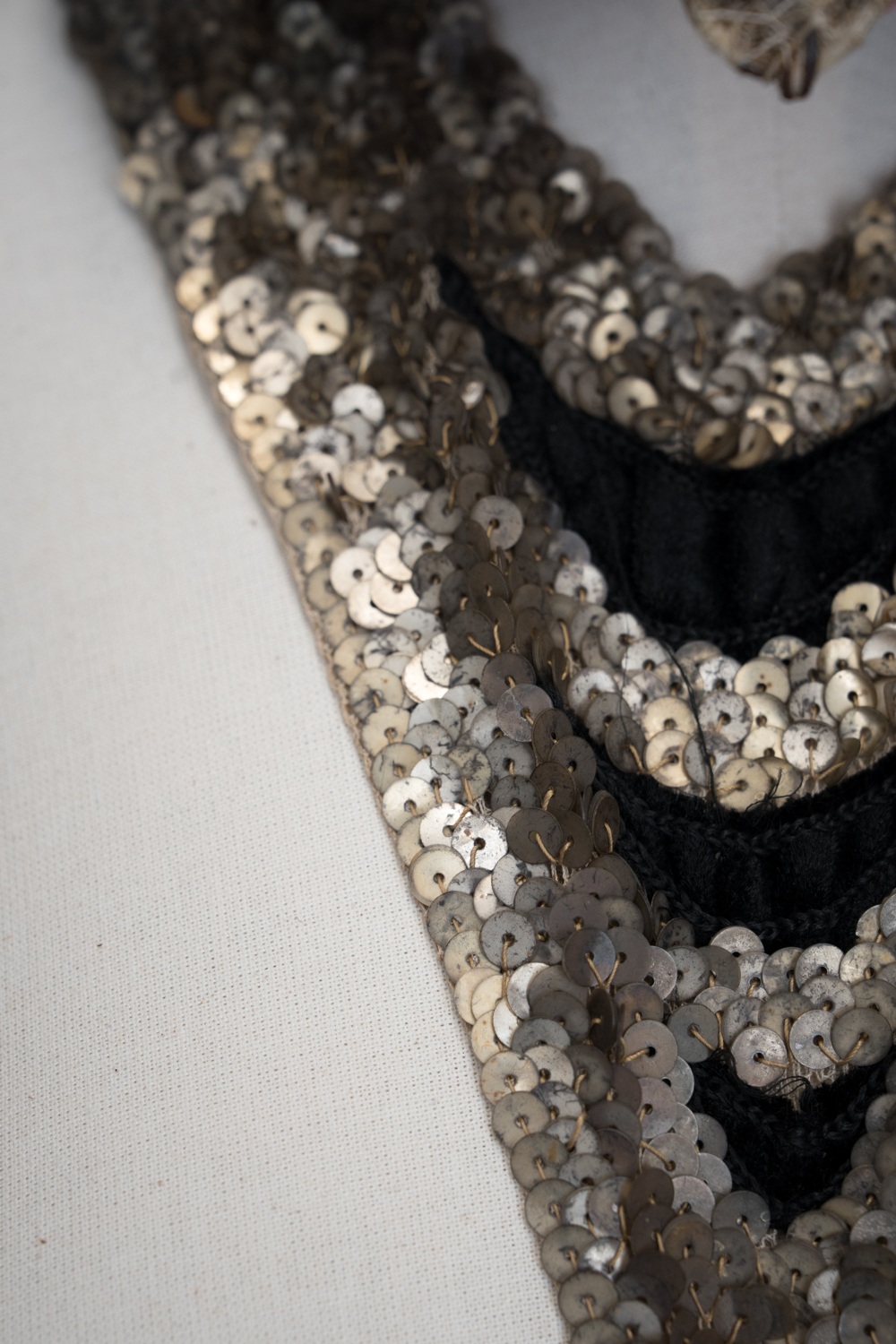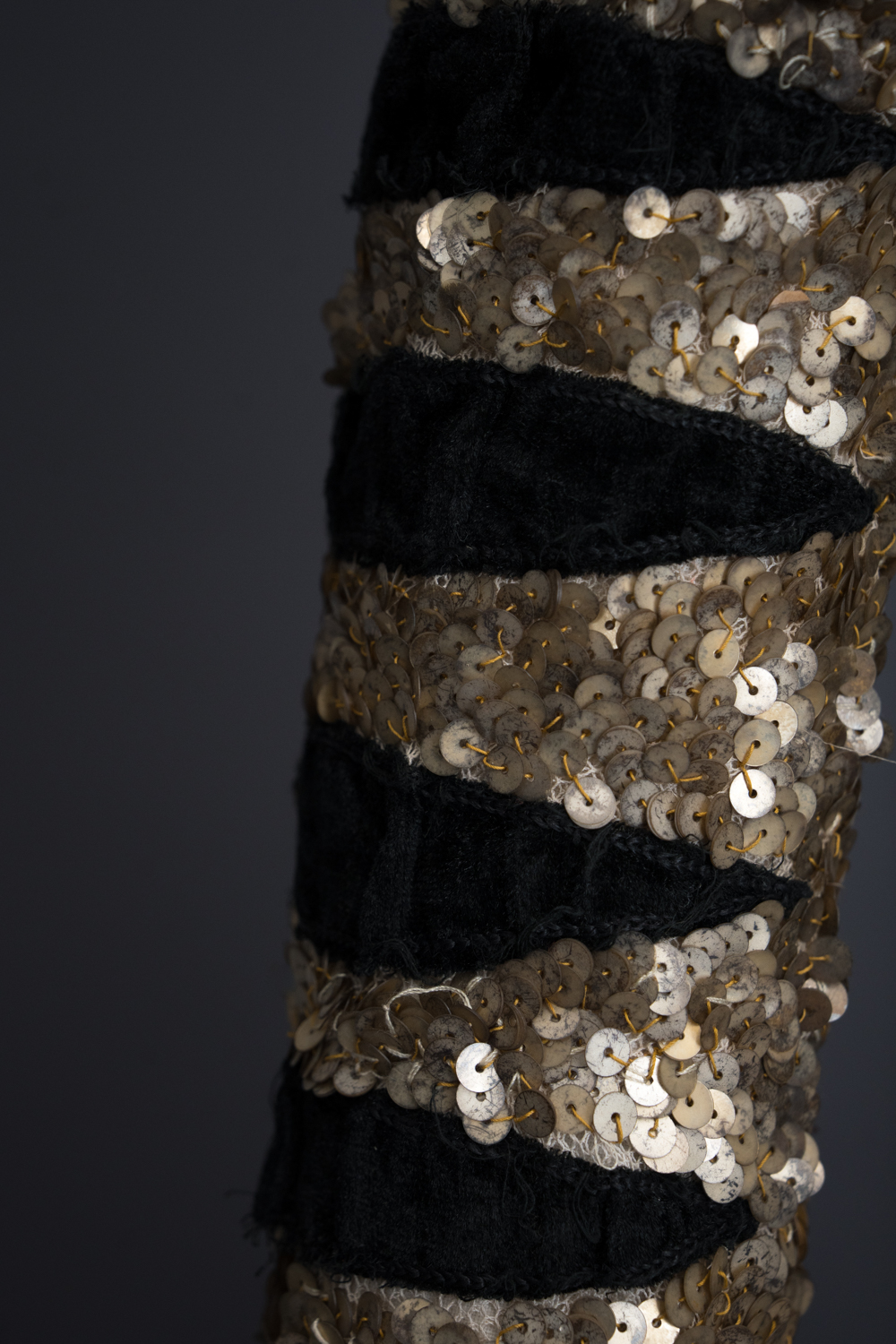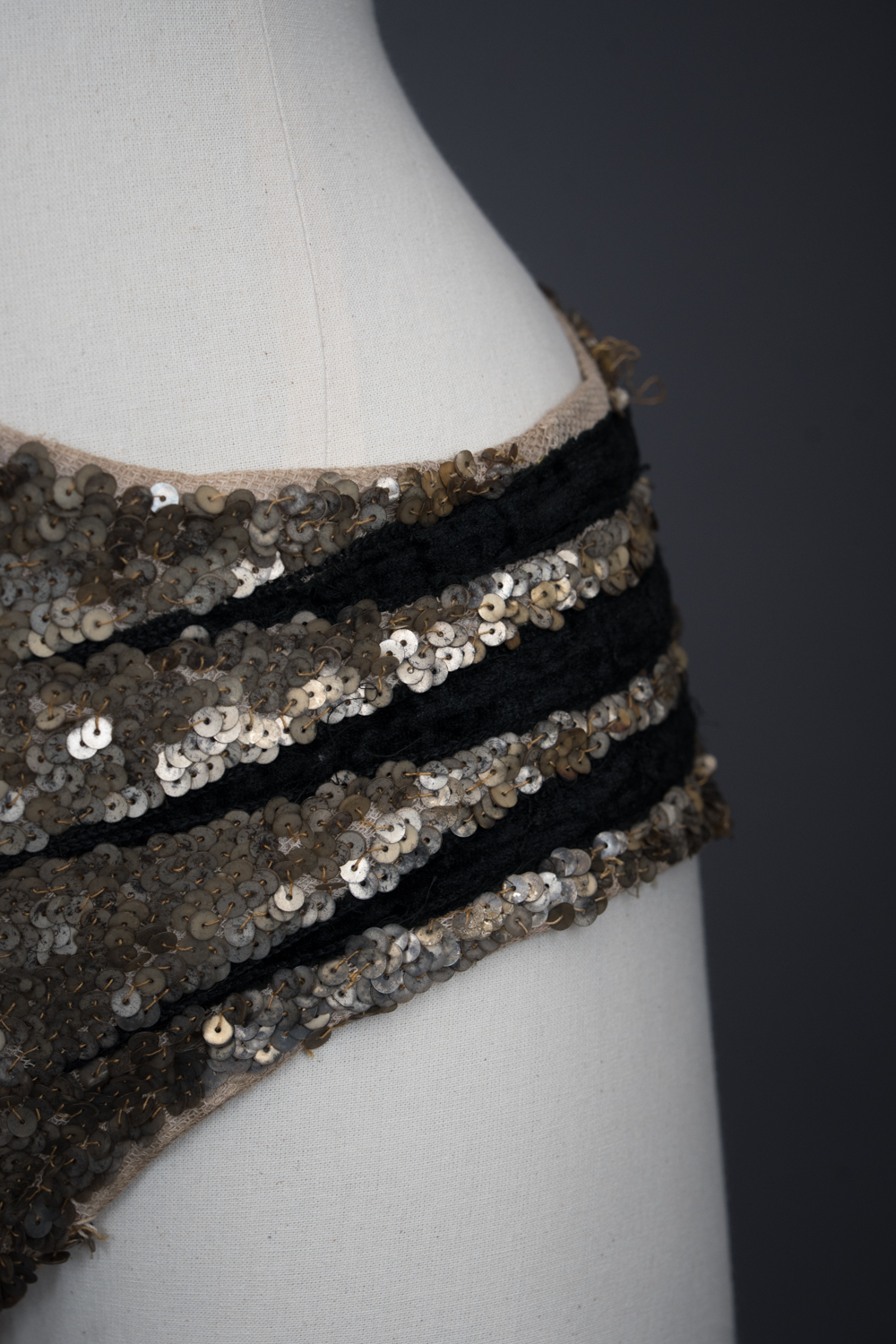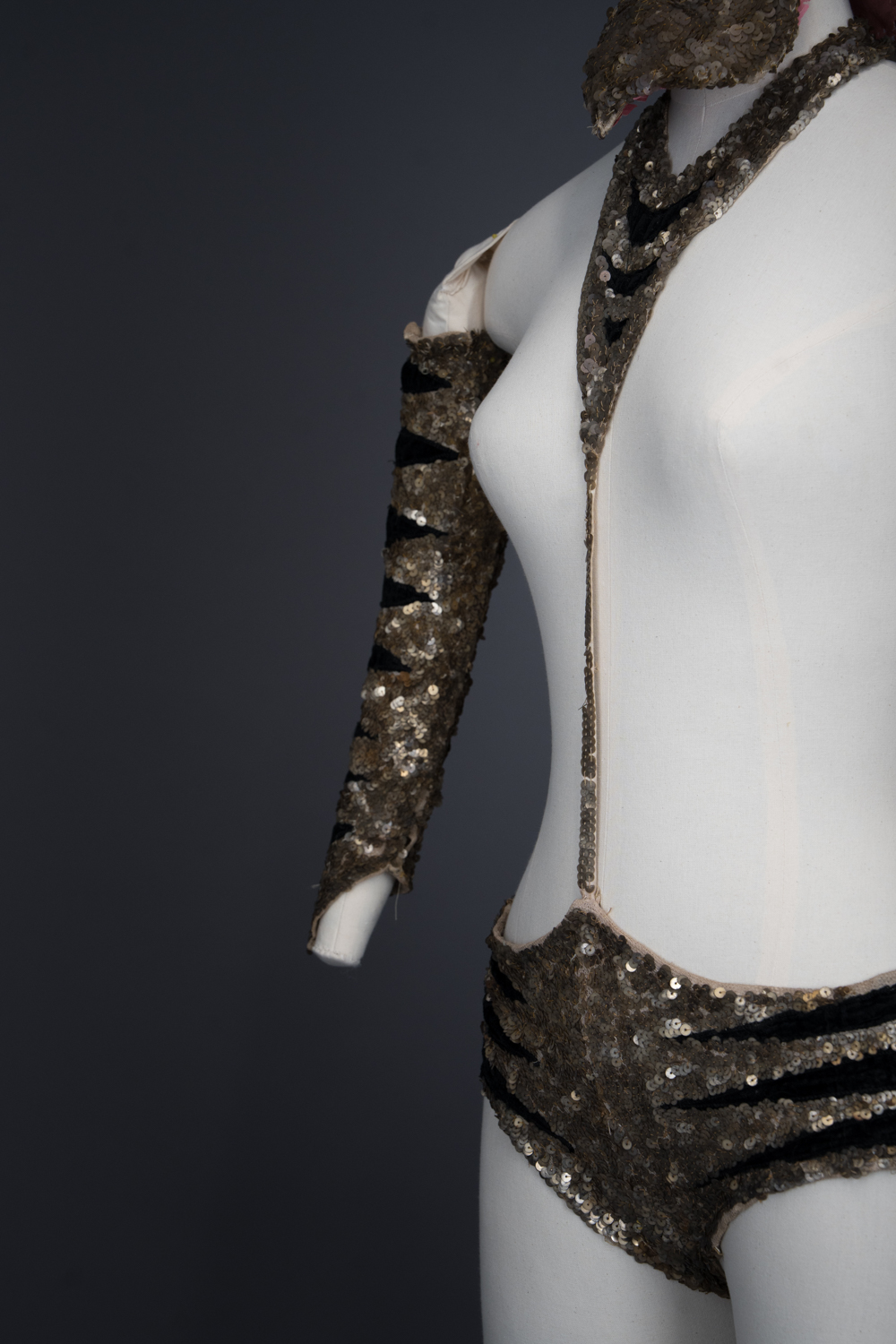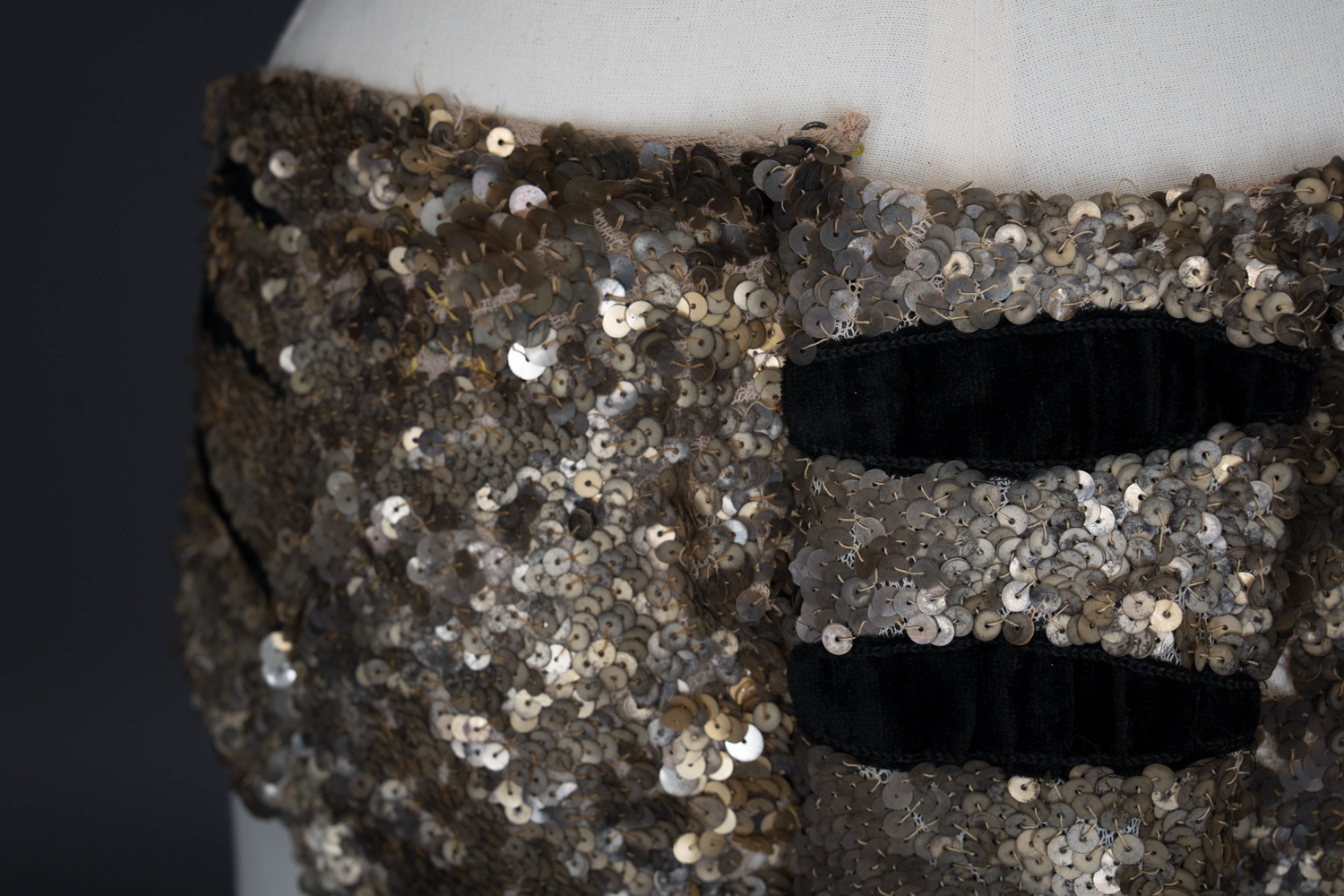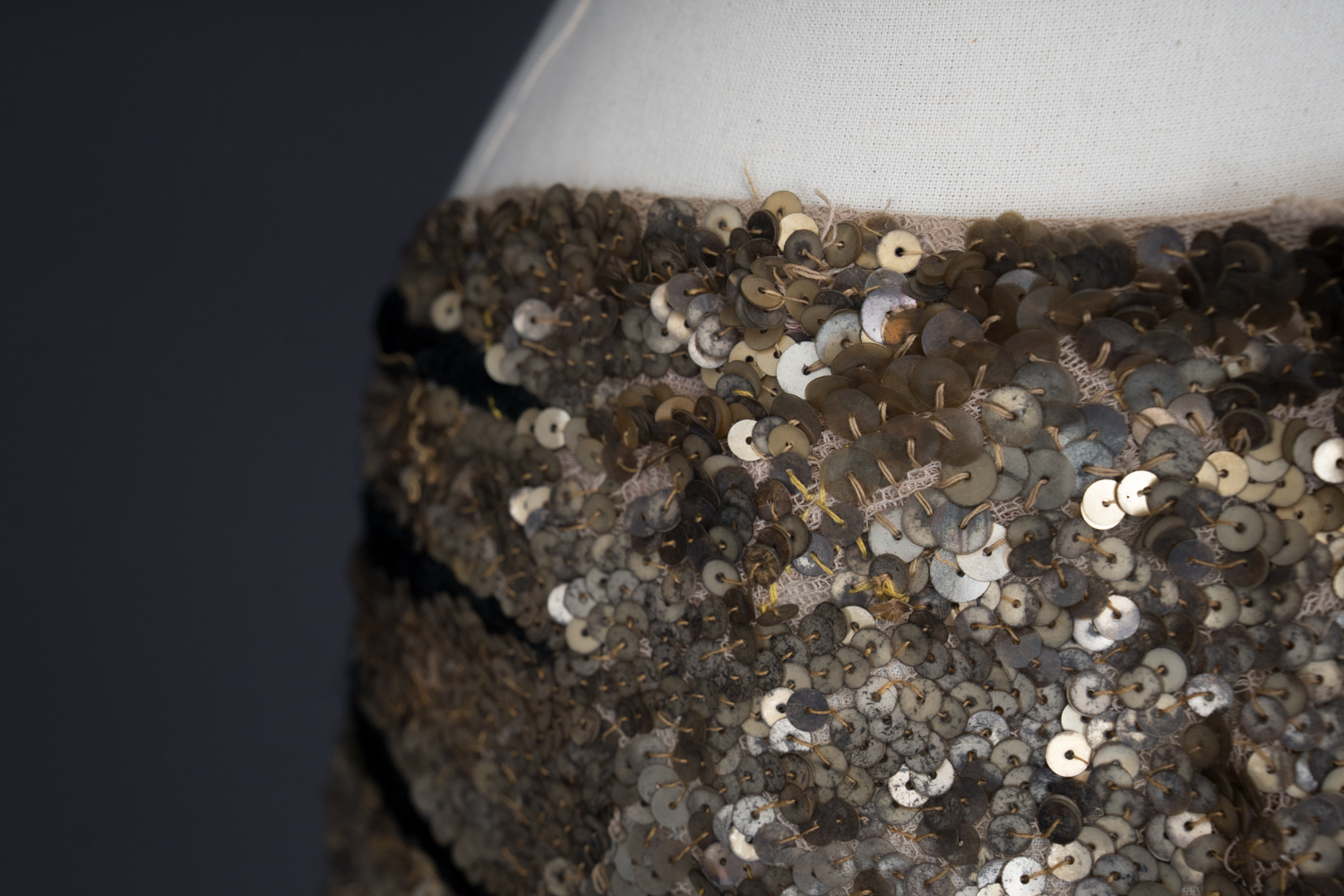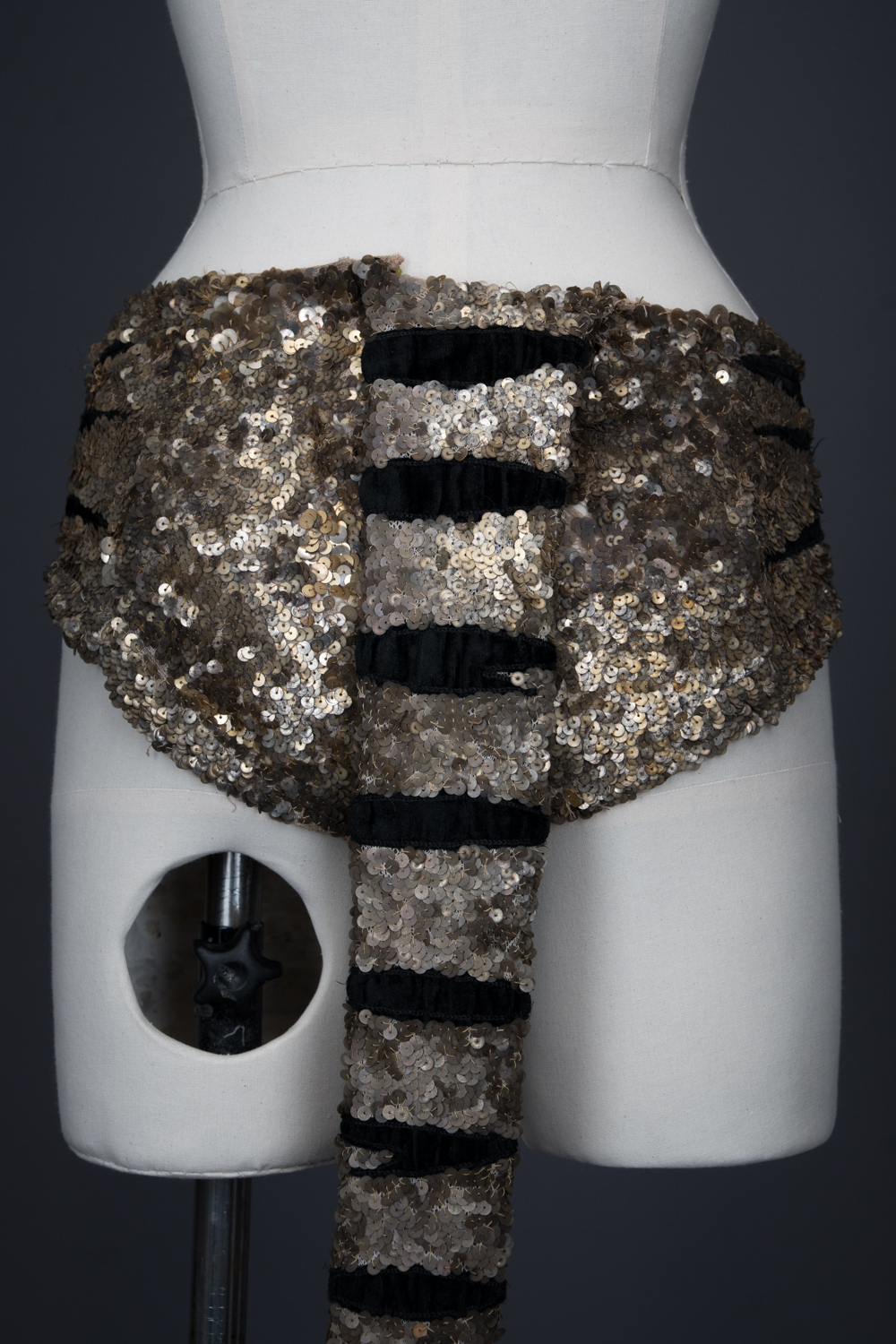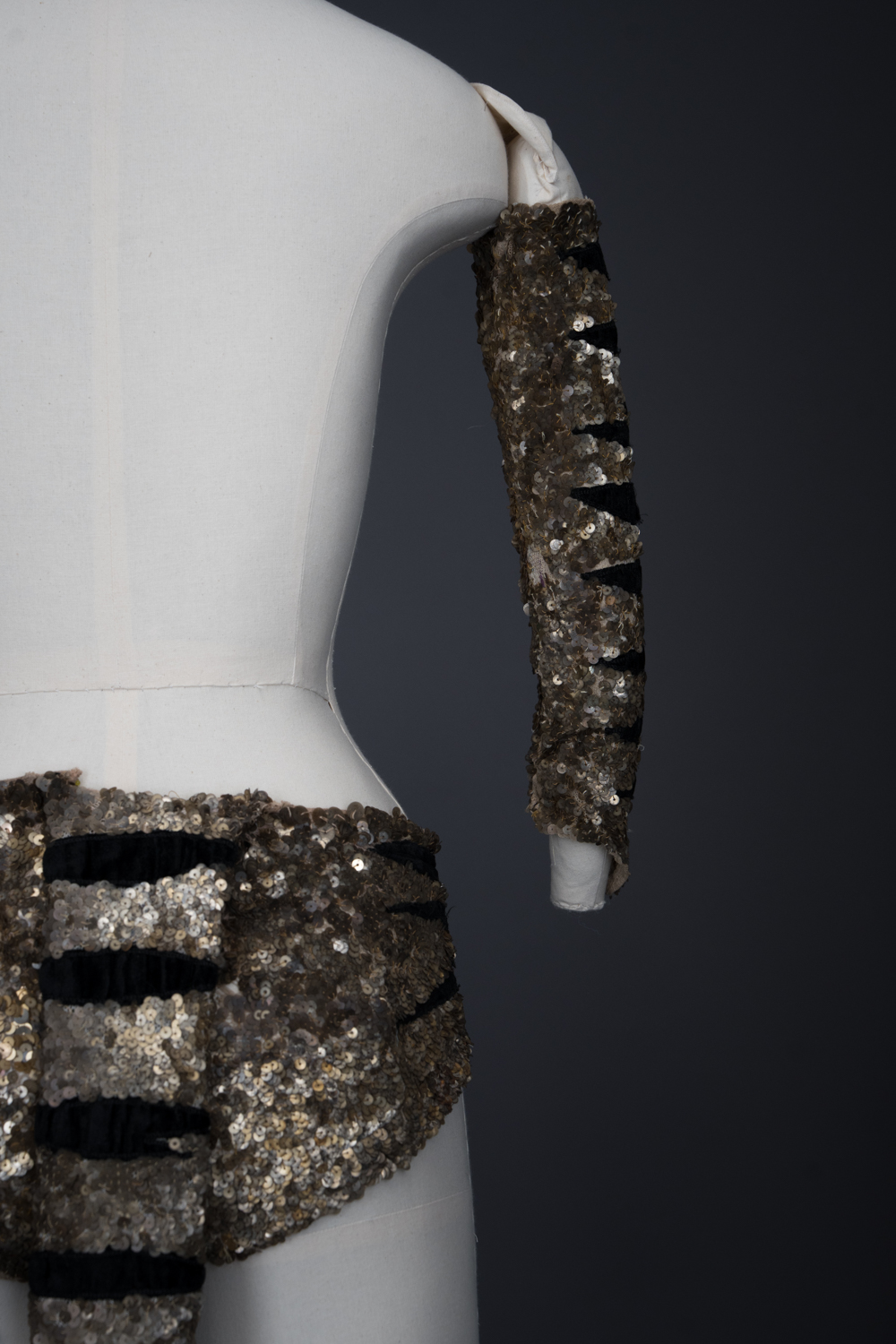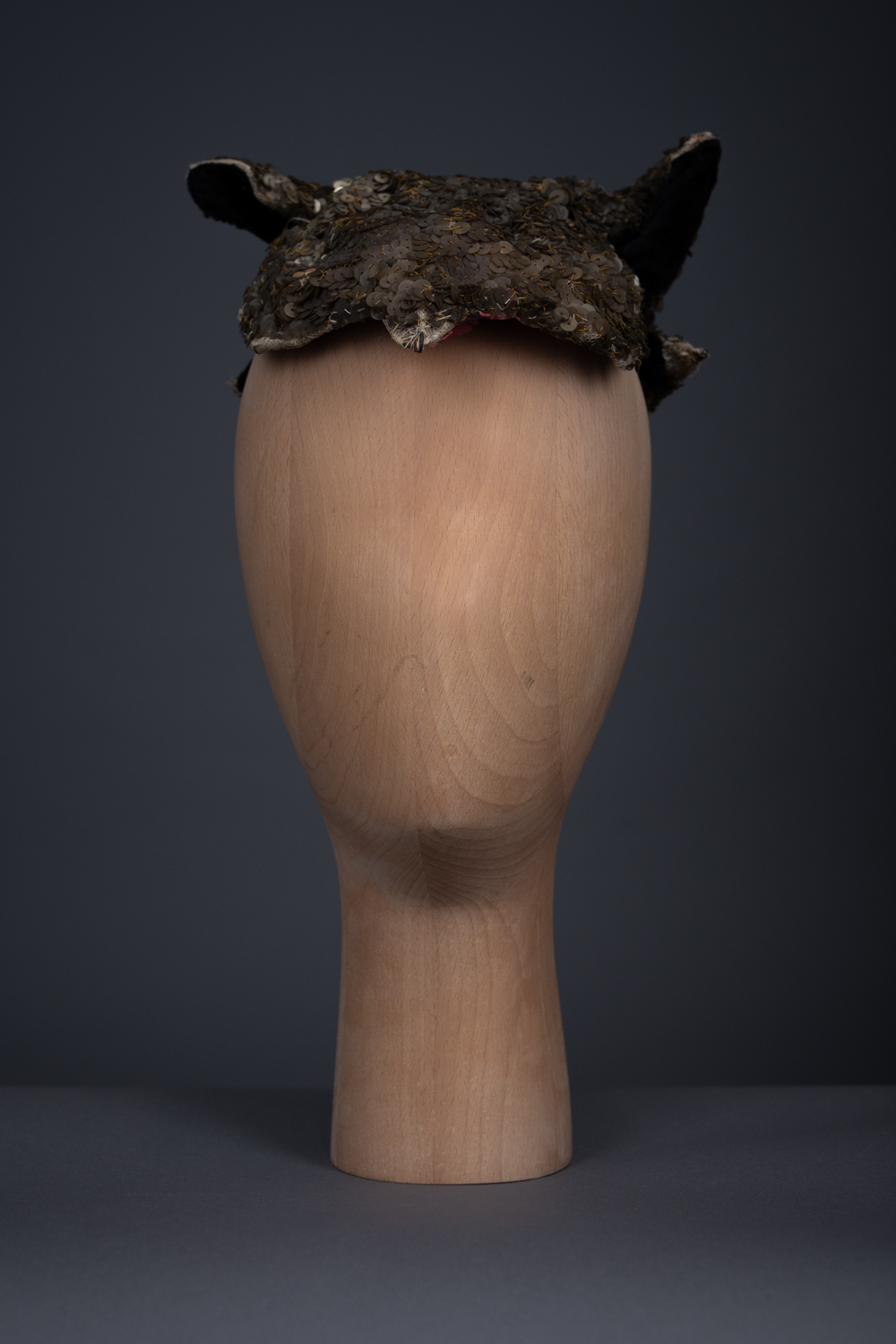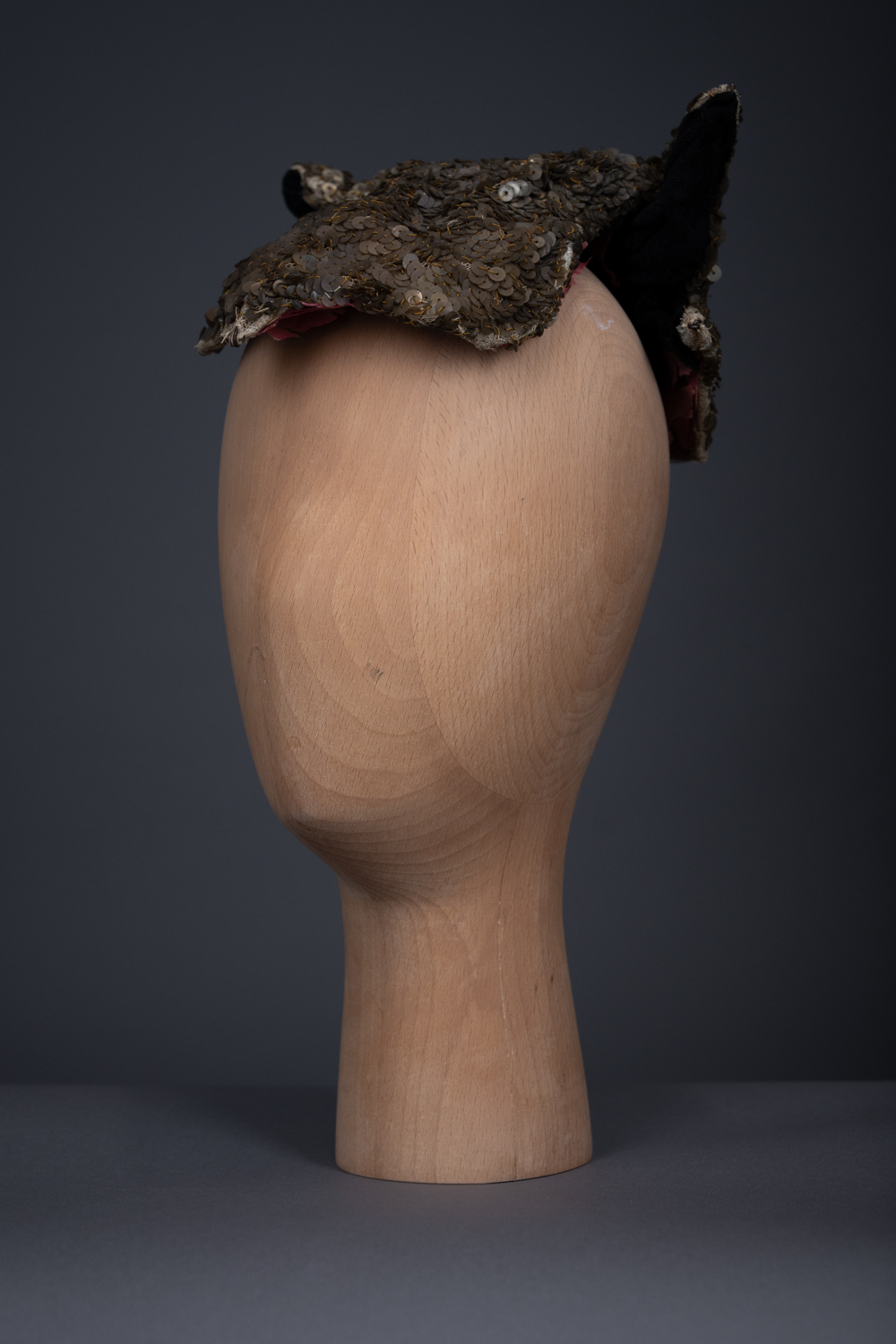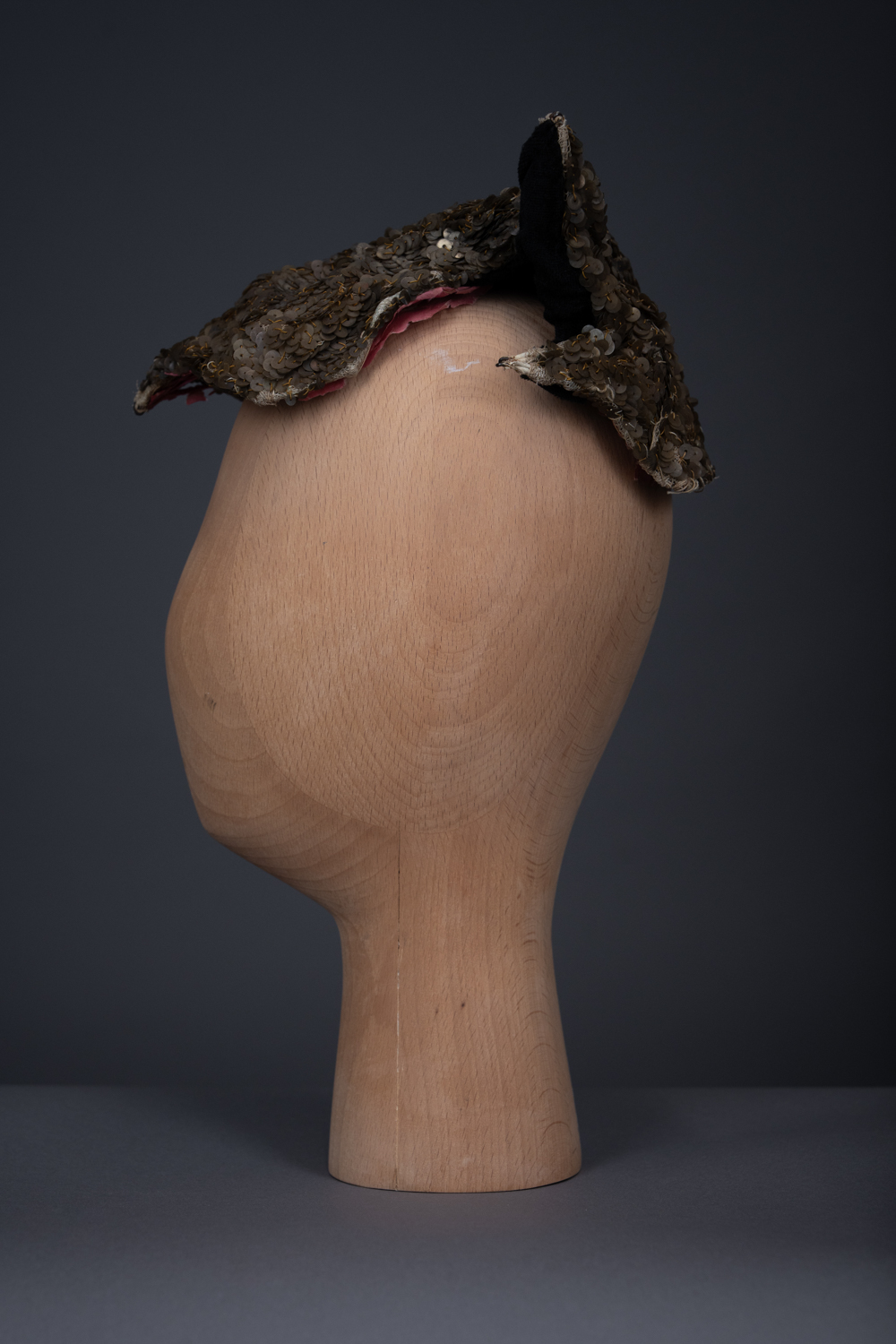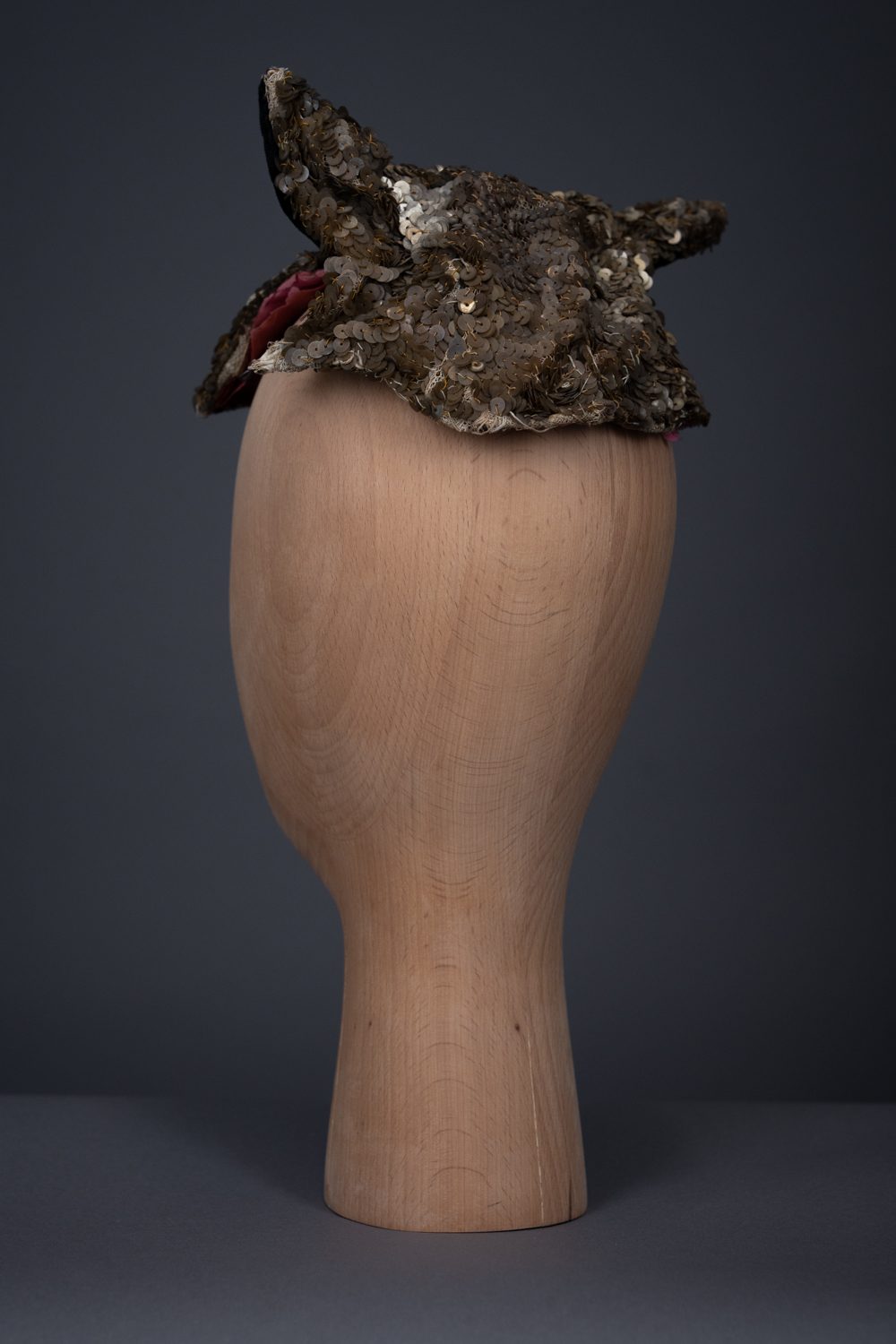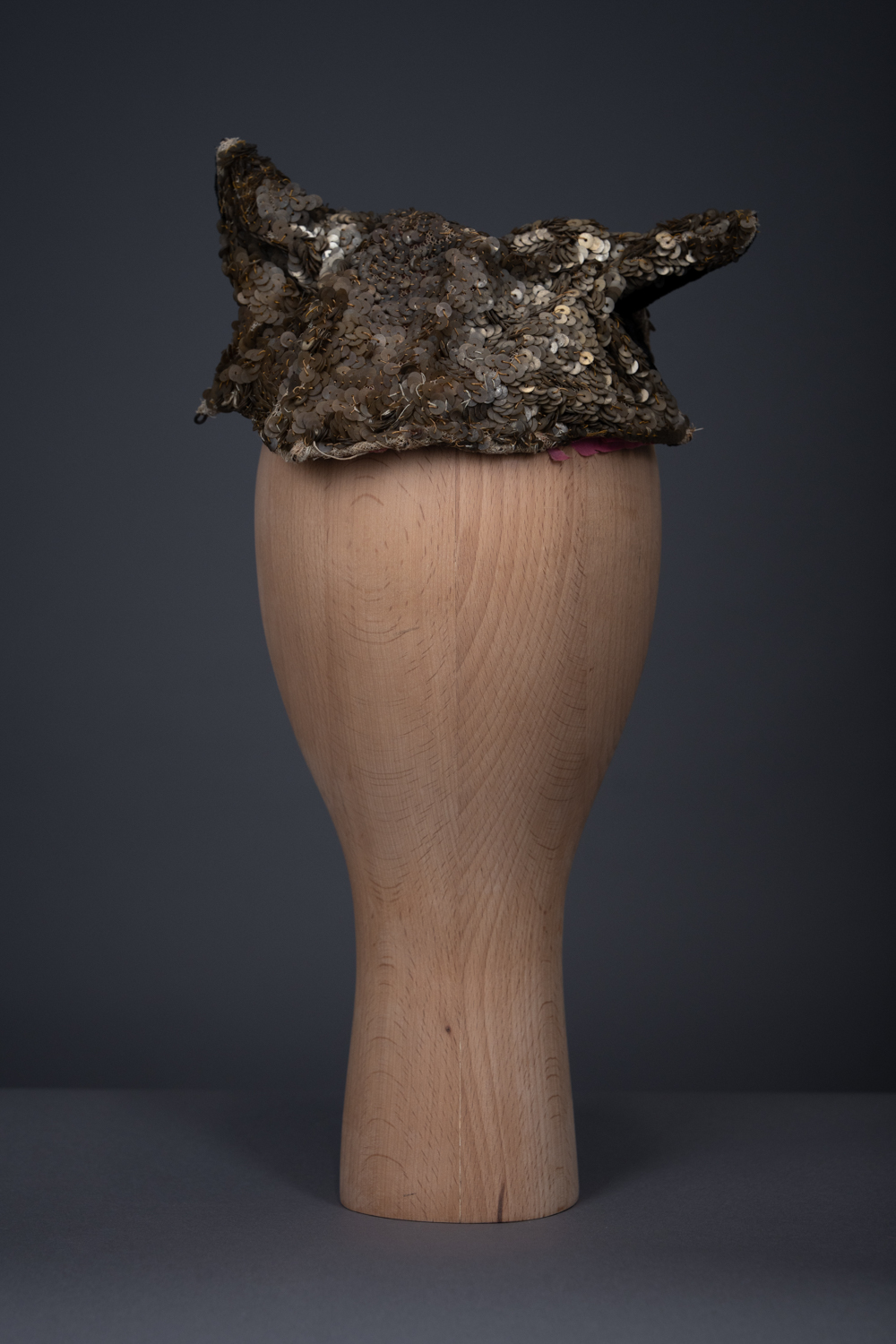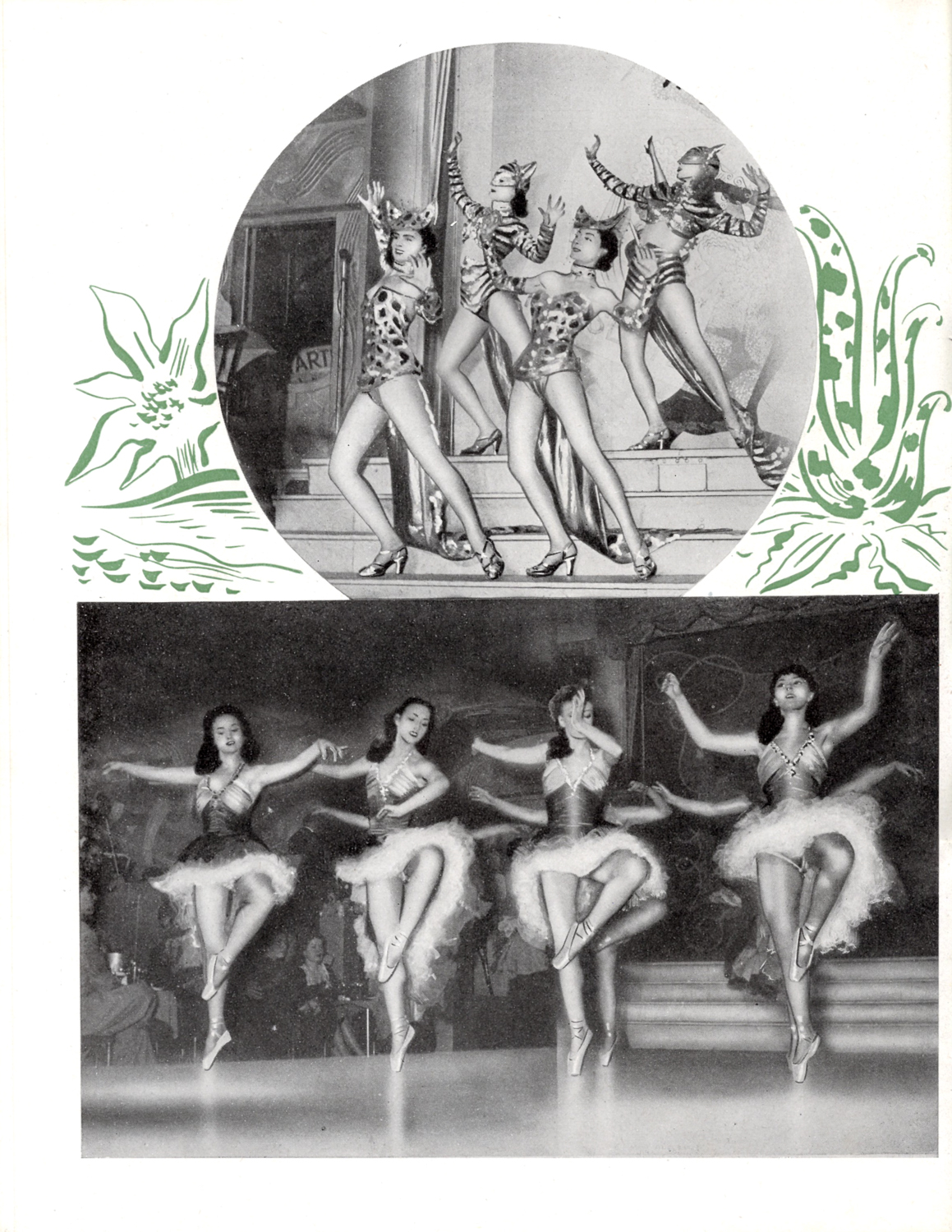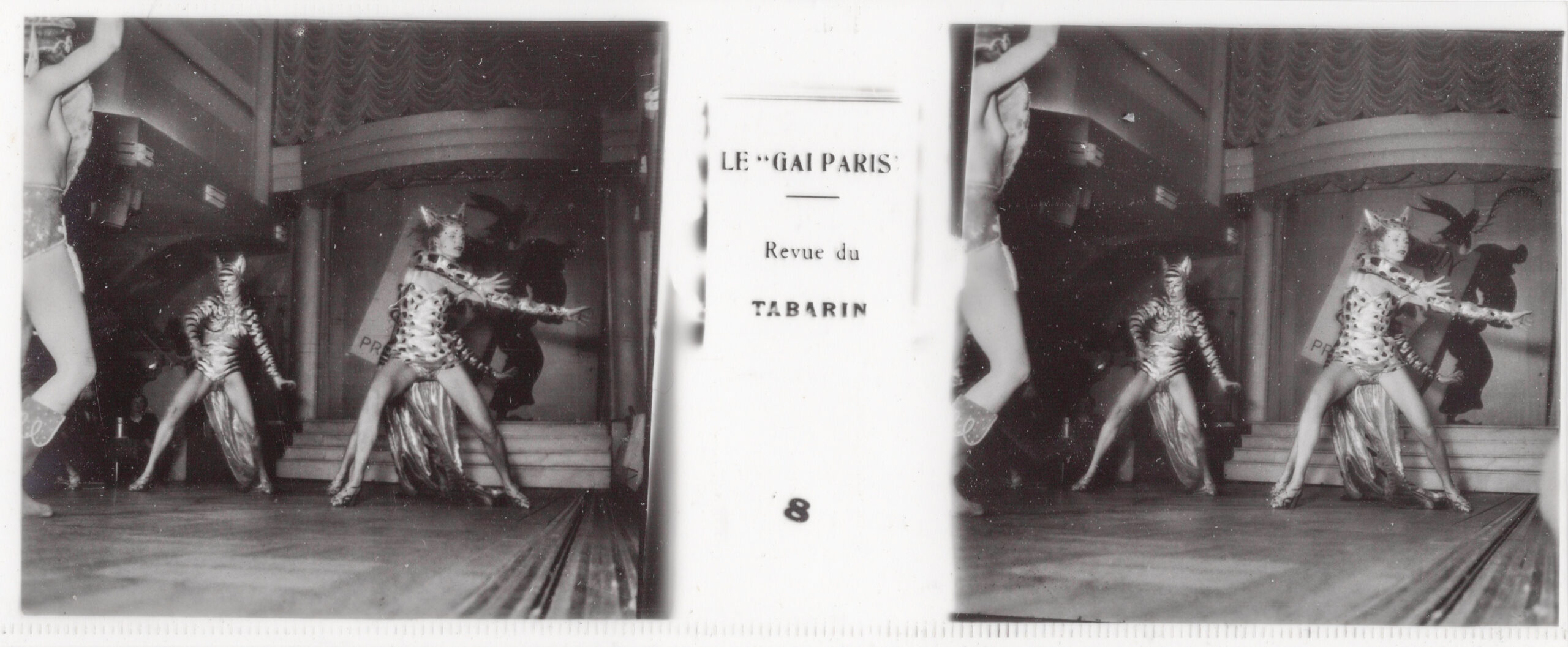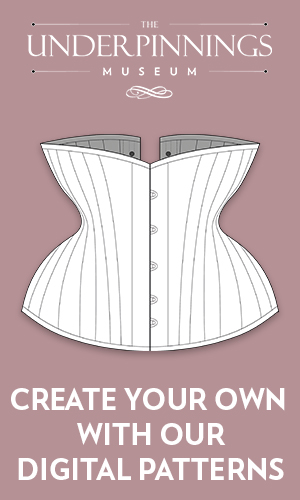Date: c. 1949
Origin: France
Fabric: Cotton bobbinet tulle, silk velvet, metal sequins
Brand: Erté
A set of a halter knicker, gauntlet and hat. There are two such knickers within the museum’s collection. Both are crafted with a cotton bobbinet tulle base, which is machine embroidered with metal sequins and velvet appliqué using a freehand chain stitch. The knickers originally fastened with hooks and eyes through a centre back seam, and hooks and eyes at the back of the halter. The tail is designed to attached with metal hooks and eyes at the back waist of the knicker. It is also crafted from a base of sequin/velvet embroidered bobbinet tulle, stuffed with cotton batting and hand stitched shut. One of the two knickers was altered at a much later date to be smaller, with a new fastening formed from synthetic fibre velcro.
Originally this outfit would have had a matching pair of gauntlets, but only a single one remains. It is made from cotton tulle, with sequin/velvet embellishment. The hat has a wire armature structure, and is covered in sequin embroidered bobbinet tulle. It is lined with rose pink silk taffeta, which is now beginning to shatter.
Both knickers are labelled with names of the performers that wore them, though it is likely these were not the original performers that these were intended for, owing to the later alterations and lack of corresponding name in the ‘Reflets’ performance programme (the cabaret show for which these designs were originally created). One knicker is labelled ‘Andrei’, the other and the hat are labelled ‘Moki’. The labels are pieces of cotton twill tape with the names hand written in blue pen and hand stitched to the garment interiors.
This costume was designed by Romain de Tirtoff, known professionally as Erté after 1913, to be worn in performances at the Bal Tabarin cabaret in Paris. Erté’s first venture into costume design was in the spring of 1913, under the tutelage of renowned couturier Paul Poiret. After WWI, he went on to design costumes for many theatrical productions, operas, and music halls, including for Bal Tabarin in 1933. Between 1933 and 1949, Erté costumed a great variety of acts at Bal Tabarin, featuring performers clad in sheer and sparkling fabrics, incorporating spectacular props that continue to be referenced by burlesque performers today. To learn more, please visit our digital exhibition, Erté: Feline Costumes for Bal Tabarin.
From the collection of The Underpinnings Museum
